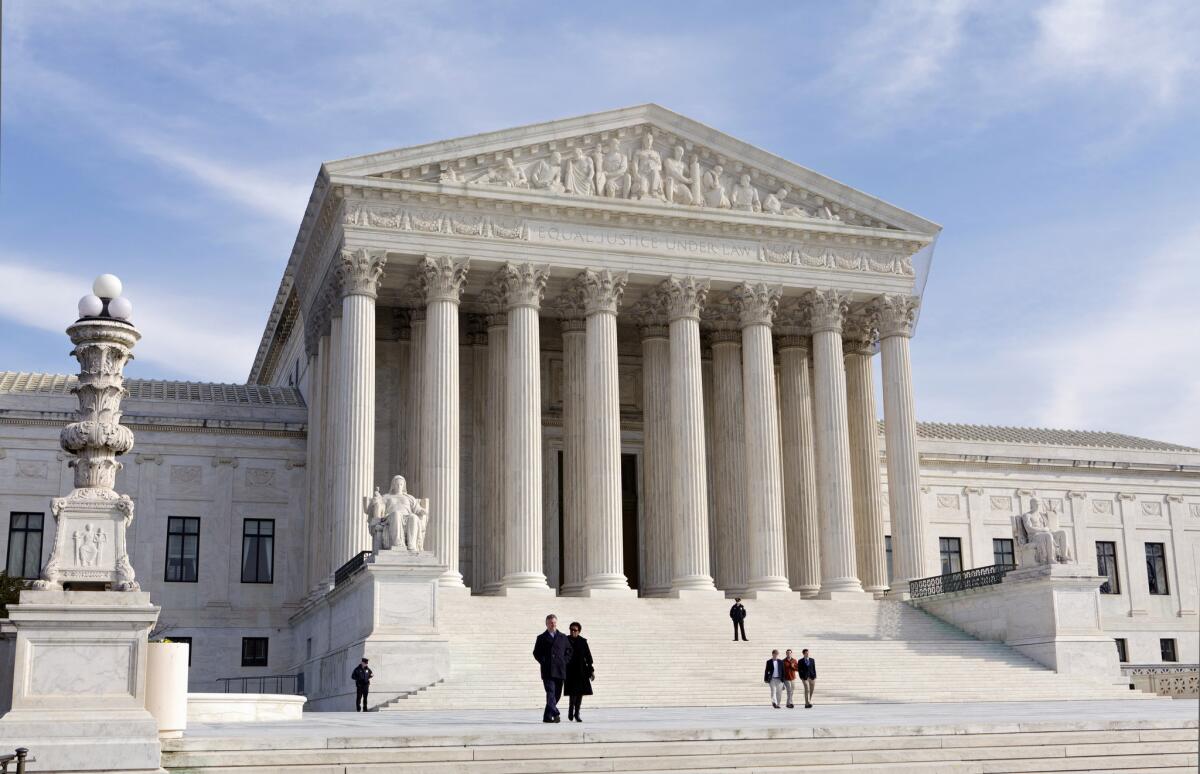What the Supreme Court 401(k) ruling means for you

A
- Share via
The U.S. Supreme Court broadened protections of workers’ retirements with an important decision that increased the responsibilities of the overseers of corporate 401(k)s, particularly regarding fees charged by mutual fund companies. The court opened the door for employees to sue plan administrators who place retirement funds in high-fee products when cheaper alternatives are readily available.
The decision in Tibble vs. Edison International comes on the heels of a proposal by the Labor Department that would require investment advisors to put clients’ interests first across a broad swath of retirement-related transactions, particularly those involving individual retirement accounts, which differ from 401(k)s in that the personal accounts don’t involve employers. IRAs and 401(k)s together make up about half of the nation’s retirement assets.
What did the Supreme Court say in its decision?
In a unanimous ruling, the court said company administrators have a “continuing duty” to monitor investment decisions and improve “imprudent” ones, even long after the initial investments have been made.
What does the Supreme Court ruling mean to my 401k?
The decision, which specifically dealt with high-fee mutual funds, expands the responsibility of plan administrators to offer competitively priced mutual funds and other financial products to their workers, potentially lowering their costs and increasing the performance of retirement portfolios.
Why should I care how much the fees are?
Even seemingly small differences in fees can over time have huge differences in portfolio performance. The Securities and Exchange Commission said for a portfolio of $100,000 earning 4% over 20 years, for instance, a 1% fee can reduce the portfolio by $30,000 compared to a portfolio charging a 0.25% fee.
What fees are too high?
This is the subject of heated debate in the financial-services industry, especially because some higher-fee funds provide higher returns over time, even after fees are deducted. However, experts say those funds are the exception, and that over the long haul most actively managed funds don’t beat industry averages. Fees over 2% are considered steep, and many mutual funds offer actively managed funds for around 1% or even less. Passively managed funds that seek to match an index’s performance will be far cheaper. Indexing giant Vanguard says its average fee is 0.18%.
Where do I find the fees?
Any reputable mutual fund provider will display the fees prominently, expressed as an “expense ratio,” on the website or paper literature displaying a fund’s performance or, more obscurely, in a prospectus filed with the Securities and Exchange Commission. Use the “net expense ratio,” which is the percentage of fund assets used to pay for administration, management, marketing, and other expenses.
Are there other fees?
Yes. Watch out for sales “loads” (fees charged on purchase of the funds), redemption fees (fees charged on selling them), and other extras. Funds that charge such fees warrant extra scrutiny.
What should I do if I have high fees?
If you’re in an IRA, you can simply sell the high fee funds and look for cheaper ones. The same goes for 401(k) plans, though those typically offer more limited options. If no low-fee options are available, you should contact your company plan’s administrator.
Twitter: @deanstarkman
More to Read
Inside the business of entertainment
The Wide Shot brings you news, analysis and insights on everything from streaming wars to production — and what it all means for the future.
You may occasionally receive promotional content from the Los Angeles Times.











